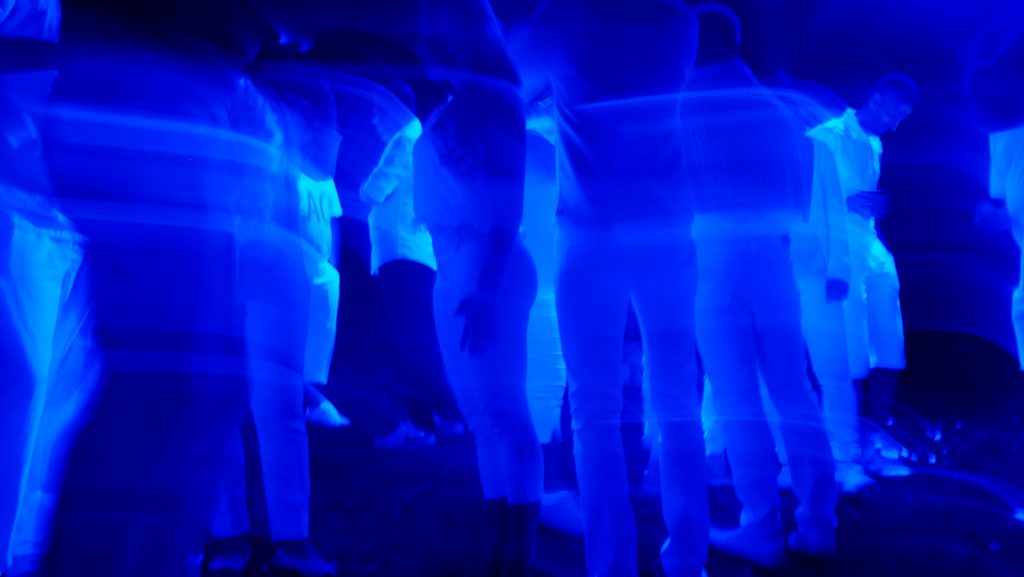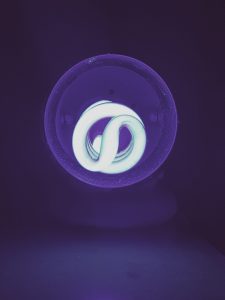





Microbial disinfection protocols often utilize ultraviolet (UV) light. The reason is because UV light is extremely damaging to cells. Not only does it trigger the production of toxic compounds (such as reactive oxygen species), but it also causes weird structural changes in DNA (known as thymine dimers). UV light, however, is also dangerous to humans. Instead, also visible light sources that can kill unwanted organisms while leaving humans unscathed have been developed.
Ultraviolet germicidal irradiation (UVGI) is a disinfection method that uses short-wavelength ultraviolet (UV-C) light to kill or inactivate microorganisms by destroying nucleic acids and disrupting their DNA, leaving them unable to perform vital cellular functions. UVC light is extremely effective at killing bacteria, viruses, mold and other pathogens. Killing bacteria with UV light requires the use of germicidal wavelengths of 185-254 nanometers (nm). UVGI is used in a variety of applications, such as food, air, and water purification. In recent years UVGI has found application in air purifiers.
One of the most common types of germicidal UV lights are low pressure mercury lamps that are used in a large range of applications including sewage treatment, purification of drinking water, food processing and irradiation, water reclamation, HVAC air sterilization and odor control. Economical to operate and long-lasting, the lamps are available in standard and high-output quartz germicidal lamps, quartz compact and GU lamps, standard and high-output softglass lamps, and softglass compact lamps.
References
Kovach, C. et al. Evaluation of an ultraviolet room disinfection protocol to decrease nursing home microbial burden, infection and hospitalization rates. BMC Infectious Diseases 2017, 17:186. https://doi.org/10.1186/s12879-017-2275-2
Reed, N.G. The History of Ultraviolet Germicidal Irradiation for Air Disinfection. Public Health Rep. 2010; 125(1): 15-27. https://doi.org/10.1177/003335491012500105

Visible light at high intensity was found to kill bacteria while low-power light in the visible and near infrared region enhances bacterial proliferation. The ability of blue light to destroy microbes is based on its ability to energize naturally light-sensitive compounds inside the micro-organism so that they start to generate reactive oxygen radicals (ROS).
The ROS are photo induced by bacterial endogenous photosensitizers, i.e., molecules containing a very reactive oxygen, causing the bacteria to damage ja destroy internally.
Phototoxic effects were found to involve induction of high amounts of reactive oxygen species (ROS) by the bacteria while low amounts of ROS may promote their proliferation. Intense blue light, preferably at 415 nm, is better than red light for bacteria killing. It has been demonstrated that visible light (LED array) of 405 nm (violet) and 460 nm (blue) has a phototoxic effect on a variety of bacteria including Gram-positive bacteria: S. aureus – MRSA, S. epidermidis, S. pyogenes, C. perfringens; Gram-negative bacteria: A. baumannii, P. aeruginosa, E. coli, P. vulgaris and K. pneumonia. Visible light has much better penetrating abilities compared to UV-light and visible light used in the photon disinfection systems can even reach through biofilm produced by bacteria. Recent evidence suggests that the contaminated hospital environment is an important source for transmission of epidemiologically important pathogens (EIP) such as MRSA and VRE. An overhead light fixture technology, which continuously and safely disinfects the environment was shown to inactivate vegetative bacteria on surfaces. The inactivation was more significant when the surface irradiance was increased by adding the blue light (405 nm).
Applications:
References
Cabral J, AG R. Blue Light Disinfection in Hospital Infection Control: Advantages, Drawbacks, and Pitfalls. Antibiotics. 2019; 8(2):58. https://doi.org/10.3390/antibiotics8020058
Lubart, R. et al. A possible mechanism for the bactericidal effect of visible light. Laser Ther. 2011; 20(1): 17-22. https://doi.org/10.5978/islsm.20.17
Rutala, W. et al. Antimicrobial activity of a continuous visible light disinfection system. Infection Control & Hospital Epidemiology 2018; 39(10): 1250 -1253. https://doi.org/10.1017/ice.2018.200
Wang, Y. et al. Antimicrobial blue light inactivation of pathogenic microbes: state of the art. Drug Resist Updat. 2017 Nov; 33-35: 1-22. https://doi.org/10.1016/j.drup.2017.10.002